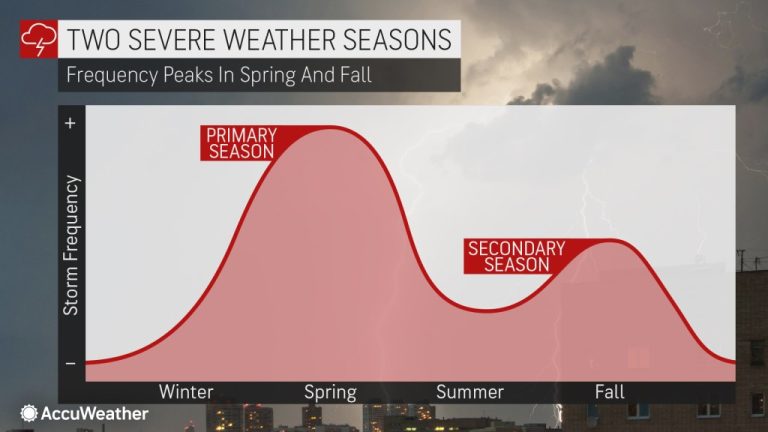AccuWeather meteorologists say there's potential for a storm that could start the severe weather season off with a bang next week.
Severe weather has occurred throughout the year in nearly every part of the country, but the official start of the spring severe weather season is quickly approaching. The historical average increase in severe weather in the central and southern states is from March to May.

Depending on the weather pattern, significant severe weather could begin to build in late winter, and this is a concern in parts of the central states before the end of February.
Short-term severe weather risks
Ahead of a potential outbreak next week, the area where thunderstorms may turn locally severe with heavy rain, strong wind gusts and large hail will extend from southeastern Kansas and northeastern Oklahoma into parts of Kentucky and Tennessee through Thursday morning.

Severe severe weather risks may develop next week
A greater and more volatile threat of severe weather could unfold by the middle of next week as warm, humid air rises over the central and southern Plains and the valleys of the Mississippi, Ohio and Tennessee.
Unseasonably warm air is set to prevail across the central United States early next week, with temperatures up to 30 degrees Fahrenheit above historical averages.

“There will likely be some fluctuations in winds at different levels of the atmosphere,” said Joe Lundberg, AccuWeather's chief long-range meteorologist. This twisting of winds is referred to as wind shear and is a necessary component of severe weather and hurricanes.
Get your AccuWeather forecast
“The key to the exact timing and location of the severe weather will depend on the track and intensity of the storm moving out of the southwest early next week,” AccuWeather Storm Warning Meteorologist Joseph Bauer said.
Get the free ACCUWEATHER app
While some of the first severe storms next week could erupt late Monday over western parts of Texas and Oklahoma, the two big days likely for severe weather will likely be Tuesday and Wednesday of next week.

All types of severe weather will be possible, including tornadoes, damaging hail and high winds.
Forecasters say this is a good time to review preparedness for severe weather in the spring, especially from Texas, Oklahoma and Kansas to Missouri, Arkansas, Iowa, Illinois, Indiana, Ohio, Kentucky, Tennessee, Louisiana, Mississippi and Alabama.

More serious threats are likely in March
“There could be another chance for severe weather in early March for part of the central states,” said Paul Pastelok, AccuWeather's chief long-range meteorologist.
As of February 19, there have been 70 proto-tornadoes in the United States this year, with two deaths, according to the National Weather Service's Storm Prediction Center (SPC). The historical average so far is 87. However, a major outbreak could push the numbers well above the average pace.
The deaths occurred during the largest outbreak of the year so far, which extended from January 8 to 9 and included about three dozen tornadoes. The strongest tornado to date, an EF3 tornado with winds of 136-165 mph, occurred when a plume moved ashore near Panama City, Florida, on January 8, according to the National Weather Service.
Want the next level of security, without ads? Get advanced, hyper-local severe weather alerts when you subscribe to Premium+ on the AccuWeather app. AccuWeather™ Alerts are requested by our meteorologists who monitor and analyze dangerous weather risks 24/7 to keep you and your family safe.

